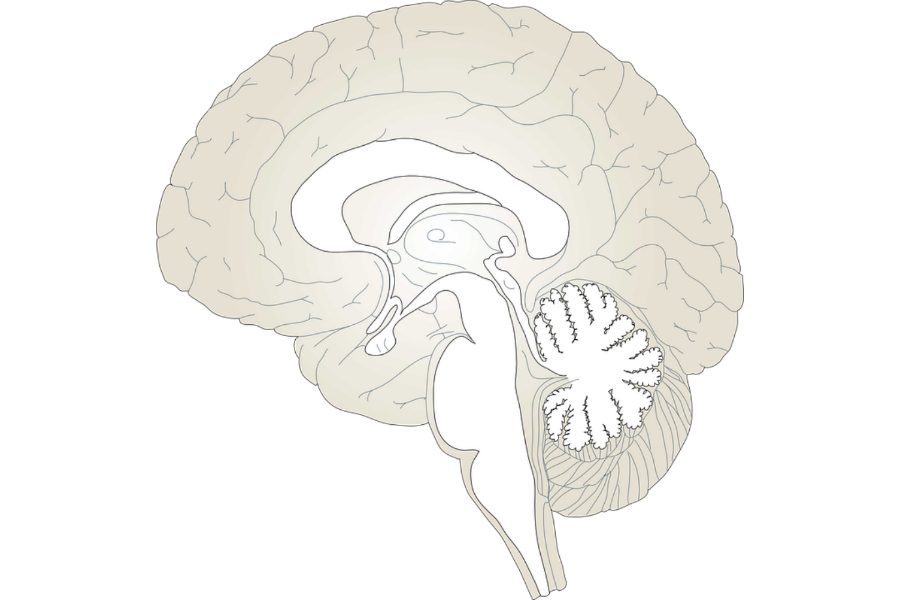A closer look at the teenage brain
The hypothalamus, pituitary gland, and amygdala are all included in the brain.
January 20, 2019
Adolescence is a time of change. In this transient period between childhood and adulthood, the brain is shifting and evolving in complex ways we are only beginning to understand, affecting relationships between parts of the human body, social interactions, and critical thinking skills. In fact, recent research suggests that the way teenagers perceive and respond to stress is shaped by this unique brain environment. What exactly is unique about the teenage brain when it comes to stress, and how do these changes come about?
I. The HPA Axis and Long-Term Stress
Stress is the body’s response to a perception of danger. When we sense a threat — be it a house fire or a history presentation — our bodies kick into high gear. When suddenly confronted with serious danger, like an oncoming car, the body releases the chemical epinephrine, which activates our fight-or-flight response almost instantaneously. This is the response that allows mothers to lift cars to save children — it greatly increases metabolism, muscle function, and blood pressure under conditions of extreme duress. However, that isn’t the only the way we respond to stress.
As long as any stressor — short-term or long-term — persists, the body’s hypothalamic-pituitary-adrenal (HPA) axis triggers a chemical pathway that ends in the release of the stress hormone cortisol in humans. This is the response that is most often triggered in daily life, which has an abundance of low-level, long-term stressors. Most importantly, the HPA axis and its effects on stress response go through significant changes during adolescence that make the way teenagers respond to stress very different from adults.
The brain can change the length of the body’s stress responses depending on its age. In both 1973 and 2004, several studies explored the effect of age on the release of corticosterone, the rat equivalent of cortisol, and ACTH, the hormone released right before it. They came to the the same conclusion: the adolescent rats (about 30 days old) had a much longer ACTH and corticosterone response than adults (65+ days old), ranging from 45 to 60 minutes longer, after they were exposed to many quick stressors.
This difference has also been observed to some degree in humans, though the subject has not been researched extensively. Boys and girls from the ages of 15 to 17 showed higher cortisol response levels than children from 9 to 13 years old in 2009 studies by Gunnar et al. and Stroud et al. in Development and Psychopathology.
In short, when exposed to the same stress level, the HPA response is higher in teenagers than in adults.
What exactly does this longer and higher cortisol response mean in terms of the body’s reaction? A longer response means that the typical effects of stress, such as increased blood pressure, risk of inflammation, and nausea, persist for a greater amount of time in teens. A higher response means that those effects are exaggerated or more severe.
It is important to note that the above study did not test chronic stress, which is a large part of what WA students face. However, chronic stress is just the constant activation of the HPA axis, so the same trend may persist.
This data suggests that adults may, in fact, handle stress better in part because they just are not as affected by it as teenagers.
Why does this change in the HPA axis happen in teens? Scientists aren’t exactly sure yet, but there are some likely possibilities. For one, the HPA axis is linked to the gonadal glands, which cause the estrogen and testosterone changes that are characteristic of puberty. Thus, as the function of the gonadal glands changes in adolescence, the HPA axis changes as well.
II. The Prefrontal Cortex and Response Control
The changing teenage brain affects not only the intensity of the stress response but also the way the brain controls the emotions that come with it. The main parts of the brain which deal with processing emotion are the cingulate gyrus, which processes our conscious emotions, the amygdala, which processes our reflexive emotions like fear and anxiety, and the prefrontal cortex, which affects mood, critical judgment, and goal-setting.
It is well-known that the prefrontal cortex and amygdala are maturing and changing throughout adolescence. That is why teenagers cannot make decisions the same way as adults, and why they are more likely to take reckless risks.
Everyone has difficulty regulating their judgment under stress. However, research indicates that once again, this characteristic is more prominent in teenagers than adults. A 2014 study by Radhar and Galavan published in Neuroimage found that after a self-reported high-stress day, high-stress teenagers had more difficulty controlling their responses to a test set by the researchers than high-stress adults.
The teenagers accessed an area of the prefrontal cortex associated with reasoning, planning, and response control less in high-stress situations than in low-stress situations, while adults did the opposite. As mentioned, the prefrontal cortex is still immature in teenagers, which likely influenced why they reacted this way. Because of this compromised ability to judge, plan, and reason, teenagers are at a disadvantage when it it comes to controlling judgements under stress than adults.
The study has implications for understanding why teenagers are more likely to make impulsive decisions, conclude Radhar and Galvan. In addition, the fact that teenagers had the opposite reaction of adults in the study suggests that the differences in stress responses has layers that have yet to be fully understood.
III. In Summary
Here are the facts: Studies show that teenage rats and humans have a longer and higher stress response than adults. Another study shows that stressed-out teenagers had worse response control than stressed-out adults. This research, along with the reasoning that the HPA axis and prefrontal cortex are still immature in teenagers, indicates that teenagers respond more intensely to stress and have greater difficulty controlling judgement under stress when compared to adults.
There has not been anywhere near enough research done on this relationship and contrast between teenage and adult stress, as it is only now becoming a recognized phenomenon. However, the combination of existing knowledge about the brain’s changes in adolescence as well as new research all point in the same direction: teenagers and adults cannot be compared when it comes to dealing with stress.
Adults must be careful when comparing the stress response of children to their own; it is perhaps not that teenagers are unreasonable or over-reactive, but that their brains are composed differently. A fuller understanding of the unique way teenagers experience stress is essential in order to better address the problems the students of today face.

















